EMPOWERING and HEALING You!
Please feel free to forward this website and flyer to your friends. Thanks!
- C-section / Episiotomy / post delivery pain / Scar massage
- Pelvic Pain
- Vaginal pain
- Breast Reconstruction Lymphedema
- Prenatal exercise
- Bed-Rest Exercises
- Post-Partum Strengthening
- Post-Op Retraining
Female Pelvic Floor Diagrams and Explanations
The Female Pelvic Floor including Urinary, Reproductive System, and Rectal / Anal areas
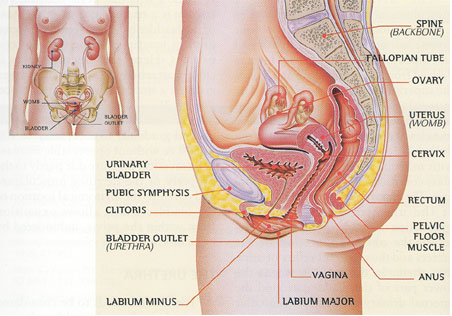
The bladder, uterus, and rectum are right next to each other, affecting each other in very intricate ways.
- Digestive problems result in stresses on the bowels.
- Inflammations and pain from Interstitial Cystitis, for example, will affect bowel patterns
- Atrophy of the muscles and tissues, dryness, and reduced tissue pliability all affect pelvic floor control and pain.
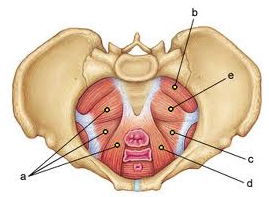
The pelvic floor is like a basket with a soft movable bottom made up of mostly muscles, ligaments, and fascia. The bottom will hold and lift better if it is strong. The ligaments and muscles surrounding the organs and pelvic floor become irritable and cause spasms in the muscles when the organs are irritable.
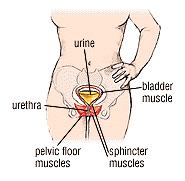
This pelvic floor also helps to control urine flow from the bladder and bowel flow from the rectum. Contracting the pelvic floor correctly helps to regulate voiding patterns and frequencies. Read more about Incontinence

As women, we undergo a lot of life changes. We make constant adjustments to our bodies. If our immune system is weak or we have excessive stresses in our lives, our bodies take longer to heal, or our systems are overwhelmed and simple problems accumulate and develop into complex or chronic irritations:
- Hormonal changes during puberty will cause changes in the reproductive system and in many cases initiate cramps, pain, and inflammations.
- The vagina is an extra special muscular organ because it is resilient- just like the woman herself. It contracts during menses (menstrual periods), causing some women to have pain, it expands and contracts during intercourse, it opens many times its size during child birth, and it contracts during dormant periods.
- Incoordination of muscle contractions during intercourse can cause stress on the vagina and the surrounding supporting tissues, resulting in muscle spasms and pain.
- During child bearing, there are more changes and pressure on the abdominal area, the low back, and the pelvic floor.
- Deliveries require special healing, any tears and incisions or C sections add more irritation and scar adhesions.
- As the mother carries the baby, works around the house, tends to other children, works at her job, etc., pressure is exerted into the abdominal and pelvic floor she bends and moves, causing excessive strain in the pelvic floor.
- As we get older we also have hormonal changes which affect tissue quality.
- Lastly and importantly in our female progression, menopause again change our hormonal cycle and causes more insult!!!!
Why do you think women are so strong minded !!!???
We become stronger because we deal with so many changes.
Some examples of problems with the FEMALE Pelvic Floor
This diagram below shows multiple factors causing increased pain and tension. These problems cause muscles spasms, irritation, and chronic pain. Repeated problems increases and worsen the pain cycle.
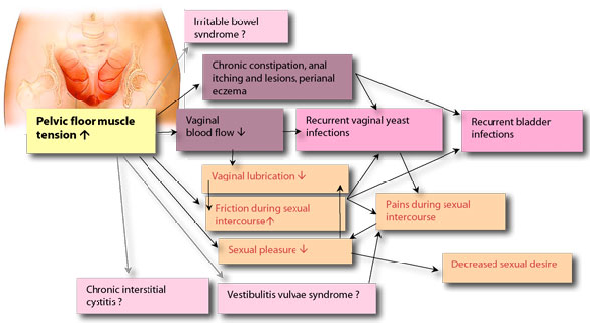
Women who had problems with abuse or violent partners often have multiple psychosocial problems, physical pain, depression, insecurities, all of which are intertwining in causation and results in chronic manifestation in pain, inflammation, weakness.
We help clarify your unique situation, to determine your cause of pain or incontinence.
Surgical repairs and cancer treatments, also cause complex pelvic pain and problems see Pain section
Importance of Correctly Locating the Pelvic Floor
Pelvic floor muscles are not hard to find. But they have to be explained to the patient by manual feedback. The patient must understand where SPECIFICALLY the pelvic floor muscles are located. If they do not understand completely and use the wrong muscles, they will continue to do the exercises wrong and develop worse problems and pain. Many patient will report that they know or have been doing "Kegels" exercise. But when inspecting the local pelvic floor muscles, we find out that they are using their buttocks, abdominals, hips and leg muscles all along, and not using the pelvic floor muscles at all!!!
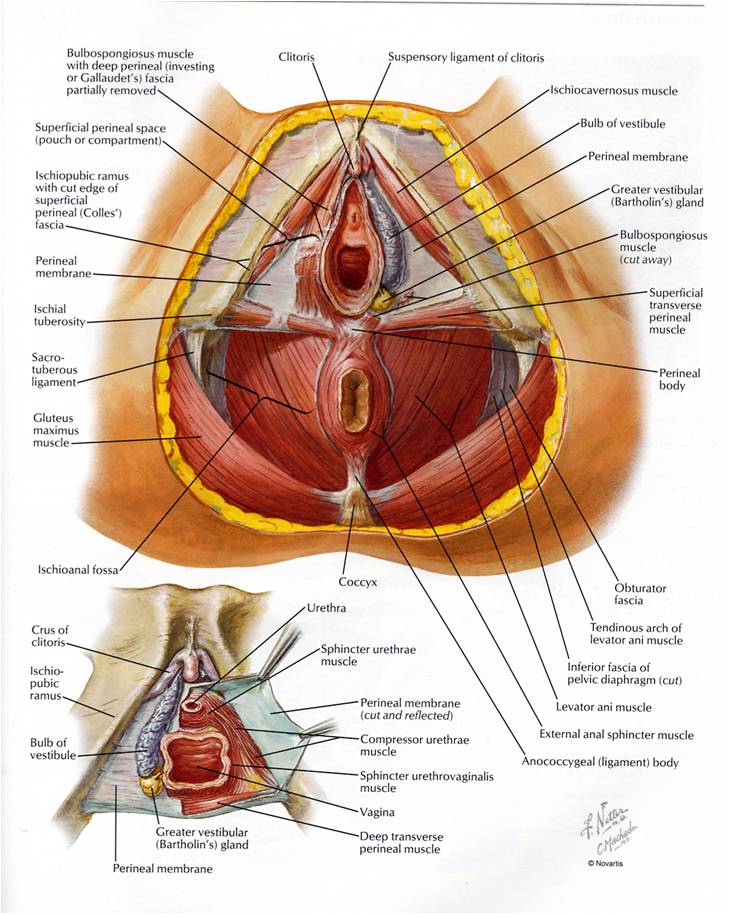
It's important for the woman to understand her own anatomy and understand how the muscles work, where to contract specific muscles correctly.
Manual feedback requires GENTLE digital tactile exam OUTSIDE AND INSIDE the vaginal or anus or both, and providing feedback to the patient about where each pelvic floor muscle is located.
As Pelvic Experts, we treat women of all ages, diverse life situations, and in all cycles of life.
We encourage you to ask a lot of questions, figure out stress factors in your life, and determine the treatment method that's best for you.
We care about your concerns!
Please click here for our Women's Health Flyer
EMPOWERING WOMEN Links :
Women's Business Centre: http://womensbusinesscentre.org/
Center for Girls: http://thecentre.org/programs/the-centre-for-girls-info



